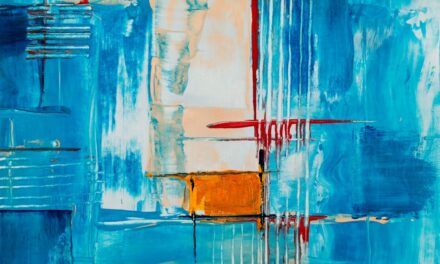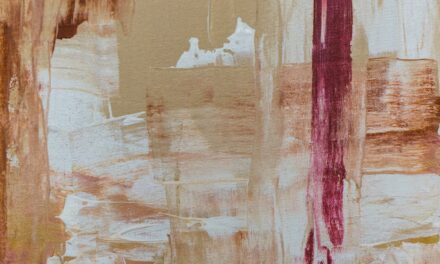Layered coloured pencil techniques form the foundation of creating depth and realism in artwork. At its core, this method involves applying multiple layers of colour to build up richness and complexity in the final piece. Unlike other mediums, coloured pencils allow for a meticulous approach, enabling artists to control the intensity and saturation of colours with precision.
The beauty of this technique lies in its versatility; artists can create everything from soft, subtle gradients to bold, vibrant hues, depending on their desired outcome. To begin mastering layered coloured pencil techniques, it is essential to understand the properties of the pencils themselves. Coloured pencils are composed of a pigment core encased in wood or a similar material, and they come in various grades, from student to professional quality.
Professional-grade pencils typically contain higher concentrations of pigment, allowing for richer colours and smoother application. As you layer colours, the interaction between different pigments can create unexpected and beautiful results, making it crucial to experiment with various combinations to discover what works best for your artistic vision.
Summary
- Understanding the basics of layered colored pencil techniques is essential for creating realistic and vibrant artwork.
- Choosing the right paper and colored pencils is crucial for achieving smooth and realistic blending in your artwork.
- Building layers and creating depth with colored pencils is a key technique for adding dimension and realism to your drawings.
- Blending and burnishing techniques are important for achieving smooth transitions and seamless color gradients in your colored pencil artwork.
- Adding detail and texture to your colored pencil artwork can elevate the overall quality and realism of your drawings.
Choosing the Right Paper and Coloured Pencils for Realistic Blending
Selecting the appropriate paper and coloured pencils is vital for achieving realistic blending in your artwork. The texture of the paper plays a significant role in how the coloured pencil interacts with its surface. Smooth papers are ideal for detailed work and fine lines, while textured papers can hold more layers and create a more organic feel.
When choosing paper, consider the weight and tooth; heavier papers can withstand multiple layers without warping, while those with a pronounced tooth can grip the pigment more effectively, allowing for richer colour application. Equally important is the choice of coloured pencils. Artists often gravitate towards brands that offer a wide range of hues and excellent lightfastness, ensuring that their artwork remains vibrant over time.
Some popular brands include Faber-Castell, Prismacolor, and Derwent, each offering unique qualities that cater to different styles and preferences. When selecting your pencils, consider not only the colour range but also the hardness of the lead; softer pencils allow for easier blending and layering, while harder pencils are better suited for fine details. By carefully choosing both your paper and pencils, you set the stage for successful blending and layering in your artwork.
Building Layers and Creating Depth with Coloured Pencils
Building layers is an essential aspect of creating depth in coloured pencil artwork. This process involves applying multiple thin layers of colour rather than attempting to achieve your desired hue in one go. By gradually layering colours, you can create a sense of dimension that adds realism to your work.
Start with lighter shades as your base layer; this allows you to establish a foundation upon which you can build darker tones. As you progress, gradually increase the pressure on your pencil to apply more pigment without overwhelming the initial layers. One effective strategy for building depth is to use a technique known as glazing.
This involves applying a transparent layer of colour over an existing layer to modify its tone without completely obscuring it. For instance, if you have laid down a light blue base, applying a thin layer of darker blue can create shadows and depth without losing the vibrancy of the original hue. This method not only enhances the dimensionality of your artwork but also allows for greater control over colour mixing and blending.
Blending and Burnishing Techniques for Smooth Transitions
Blending is a crucial technique in coloured pencil art that helps achieve smooth transitions between colours. There are several methods to blend colours effectively, each offering different results depending on the desired effect. One common approach is to use a blending stump or tortillon, which allows you to smudge and merge colours seamlessly.
This tool is particularly useful for creating soft gradients or subtle transitions between shades, as it helps to push the pigment into the paper’s texture. Burnishing is another technique that can enhance the smoothness of your artwork. This method involves applying heavy pressure with a lighter colour over darker layers to create a polished finish.
Burnishing not only helps to fill in any remaining white spaces on the paper but also intensifies the colours beneath it, resulting in a vibrant and cohesive appearance. While burnishing can be effective for achieving a smooth surface, it is essential to use it judiciously; over-burnishing can lead to a loss of detail and texture in your work.
Adding Detail and Texture to Your Coloured Pencil Artwork
Detail and texture are vital components that elevate coloured pencil artwork from mere representation to captivating realism. To achieve intricate details, artists often employ fine-tipped pencils or sharpen their pencils to a fine point. This precision allows for delicate lines and subtle nuances that bring life to subjects such as fur, feathers, or intricate patterns in fabric.
When adding detail, it is essential to observe your subject closely; understanding how light interacts with different surfaces will inform your choices regarding highlights and shadows. Texture can be created through various techniques, including cross-hatching, stippling, or even using an eraser to lift pigment for highlights. Cross-hatching involves layering lines in different directions to create depth and dimension, while stippling uses small dots to suggest texture without overwhelming the viewer with detail.
Additionally, incorporating varied pressure when applying colour can create different textures; lighter pressure yields softer edges, while heavier pressure produces bolder lines. By thoughtfully combining these techniques, you can infuse your artwork with richness and complexity that draws viewers in.
Creating Realistic Skin Tones and Textures with Layered Coloured Pencil Techniques
One of the most challenging aspects of coloured pencil art is rendering realistic skin tones and textures. Achieving lifelike skin requires an understanding of colour theory and how various hues interact with one another. Skin tones are rarely uniform; they consist of a range of colours that include pinks, yellows, browns, and even greens or blues in certain lighting conditions.
To create realistic skin tones, start with a base layer of light peach or beige and gradually build up darker shades for shadows and contours. Layering is particularly important when working on skin tones; by applying thin layers of colour, you can create subtle variations that mimic the natural translucency of skin. Incorporating complementary colours can also enhance realism; for instance, adding a touch of blue or green in shadowed areas can create depth and dimension.
Additionally, pay attention to texture; using fine strokes or stippling techniques can replicate the appearance of pores or fine lines, adding authenticity to your portrayal.
Tips and Tricks for Achieving Realistic Blending in Coloured Pencil Art
Achieving realistic blending in coloured pencil art requires practice and patience, but several tips can help streamline the process. First and foremost, always work from light to dark; this approach allows you to maintain control over your layers and prevents darker colours from overpowering lighter ones. Additionally, consider using a colourless blender pencil or solvent to help merge colours seamlessly; these tools can soften edges and create smooth transitions that enhance realism.
Another valuable tip is to take breaks during your work sessions. Stepping back from your artwork allows you to view it with fresh eyes, making it easier to identify areas that require further blending or adjustment. Furthermore, don’t hesitate to experiment with different techniques; every artist has their unique style, so finding what works best for you may involve trial and error.
Lastly, keep a swatch chart of your colours handy; this reference will help you remember which combinations yield the best results as you develop your skills.
Common Mistakes to Avoid When Using Layered Coloured Pencil Techniques
As with any artistic endeavour, there are common pitfalls that artists may encounter when using layered coloured pencil techniques. One frequent mistake is applying too much pressure too early in the process; this can lead to an inability to layer additional colours effectively later on. Instead, focus on building up layers gradually with light pressure before transitioning to heavier applications as needed.
Another common error is neglecting the importance of colour theory; failing to understand how colours interact can result in muddy or unappealing blends. Always take time to study how different hues work together before committing them to paper. Additionally, be mindful of overworking areas; excessive layering can lead to a loss of detail and vibrancy in your artwork.
By being aware of these common mistakes and taking steps to avoid them, you can enhance your skills and produce stunning coloured pencil art that captivates viewers.
If you are interested in exploring more about the world of art, you may want to read An Introduction to the Painting ‘The Empire of Light’ (1954) by René Magritte. This article delves into the fascinating work of the surrealist artist and his unique approach to capturing light and shadow in his paintings. Just like the intricate techniques discussed in Layered Colored Pencil Techniques for Realistic Blending, Magritte’s work also showcases a mastery of blending and layering to create stunning visual effects. Explore the world of art and discover the beauty of blending colours and textures in different artistic styles.
FAQs
What are layered colored pencil techniques for realistic blending?
Layered colored pencil techniques for realistic blending involve building up layers of different colored pencils to create a smooth and realistic blend of colors. This technique allows artists to achieve a more lifelike and three-dimensional effect in their drawings.
How do you use layered colored pencil techniques for realistic blending?
To use layered colored pencil techniques for realistic blending, start by choosing a reference image with a wide range of colors. Begin by layering light colors first, gradually building up to darker shades. Use a light touch and multiple layers to blend the colors smoothly, creating a realistic and seamless transition between different hues.
What are the benefits of using layered colored pencil techniques for realistic blending?
Using layered colored pencil techniques for realistic blending allows artists to create depth, dimension, and a more lifelike appearance in their drawings. This technique also provides greater control over color blending and allows for the creation of intricate details and textures.
What are some tips for mastering layered colored pencil techniques for realistic blending?
Some tips for mastering layered colored pencil techniques for realistic blending include using high-quality colored pencils, working on a smooth and sturdy surface, and practicing patience and precision. It’s also important to pay attention to light and shadow, and to gradually build up layers of color to achieve a smooth and realistic blend.
Are there any specific colored pencil brands or types that work best for layered blending techniques?
While there are many brands of colored pencils that can be used for layered blending techniques, some popular choices among artists include Prismacolor, Faber-Castell Polychromos, and Caran d’Ache Luminance. These pencils are known for their rich pigments, smooth application, and ability to layer and blend effectively.


